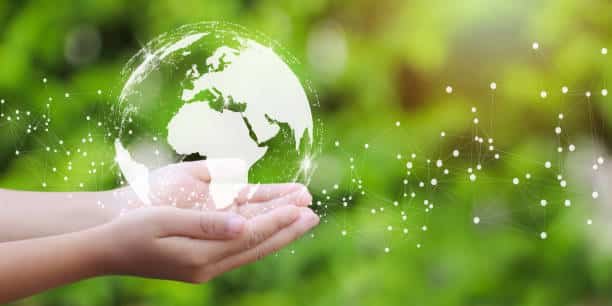
Environmental Wellness :-
Do you also imagine yourself taking deep breaths of fresh air, being surrounded by nature, and the smell of the woods? This isn’t just a scene from your imagination, it’s a glimpse into the world of environmental wellness.
Environmental wellness is about cultivating a deep connection with nature, from our personal space to the wider world. It’s about recognizing the impact the environment has on the beings. The environment is also a reason for the changes in our health. Environmental wellness is really important for our mental, emotional, and physical health.
Are you ready to unlock the power of environmental wellness? Let’s dive in and explore how creating a healthy environment can contribute to a happier, healthier you.
- External Environment: This refers to the natural world around you, including your home, workplace, community, and the wider planet. Environmental wellness encourages us to be mindful of the impact we have on this environment and to take steps to protect it.
- Internal Environment: This refers to your perception of and connection to the world around you. It’s about feeling safe, comfortable, and inspired by your surroundings.

Aspects of Environmental Wellness :
1. Personal Environment:-
A. To make your environment good, first, you should make a change in your physical space. Physical space means your home, your workspace, or anywhere you spend most of the time. You can make your physical environment good by keeping your surroundings organized, and clean, and by adding the things that make you feel happy and relaxed.This could be like plants, pictures of your loved ones furniture, candles, and many more things.
The people with whom you spend your time can have a big impact on your mood and well-being. And they can also be the reason for a bad environment. Surround yourself with positive, supportive people. Who makes you feel good, who motivates you, and who always sticks there with yourself. If there are people in your life who always demotivate you, who bring you down, who make you uncomfortable, then distance yourself from them.
B. Stop using toxic cleaning products. Because those toxic products can harm and irritate your skin, eyes, and respiratory system. They can be harmful if inhaled or ingested, especially for children and pets. So switch to non-toxic cleaning products and natural elements.
Reduce, Reuse, Recycle, This classic trio is still a great starting point. Reduce your consumption by buying only what you need, reuse items whenever possible (think reusable water bottles and shopping bags), and recycle diligently. Switch to LED light bulbs, unplug electronics when not in use, and adjust your thermostat for seasonal comfort. Consider air-drying clothes instead of using the dryer.
2. Community Environment:-
A. Feeling safe and secure in your neighborhood is a crucial part of overall well-being. It allows you to relax, enjoy being outdoors, and feel comfortable in your surroundings.
B. Being involved in your community and spending time in green spaces are two powerful ways to boost your environmental wellness. Participating in community events and activities fosters a sense of belonging and social connection. Community involvement allows you to work alongside others to improve your neighborhood.
C. Spending time in nature has a well-documented calming effect. Whether it’s a walk in the park, a hike in the woods, or simply sitting under a tree, nature provides a respite from the stresses of daily life and promotes a feeling of peace and well-being. Green spaces also encourage physical activity, whether it’s walking, running, biking, or playing sports.
3. Natural Environment:-
A. Spending time in nature offers a powerful one-two punch for our well-being: reducing stress and boosting our mood. Nature offers a break from demanding cognitive tasks. Feeling a part of something bigger than ourselves can be incredibly calming. The more time you spend in nature, the greater the positive impact on your stress levels and mood. Even a short walk in a park or sitting on a bench under a tree can make a difference
B. Environmental conservation and sustainability are intertwined concepts that are crucial for the long-term health of our planet and all its inhabitants, including us. A clean environment is essential for our well-being. Conservation efforts help ensure clean air and water, which are vital for human health. We rely on natural resources like forests, fisheries, and minerals for everything from food and clean water to building materials and medicine. Climate change is one of the biggest threats facing our planet.

Environmental wellness is all about fostering a positive connection with the environment around you. It emphasizes the importance of creating healthy and sustainable spaces, both inside and outside, that contribute to your overall well-being.
Environmental wellness is a journey, not a destination. By incorporating small changes into your daily routine, you can cultivate a deeper connection with the environment and improve your overall well-being.
By taking care of the environment, we take care of ourselves and future generations. Environmental issues often take time to develop and resolve. Taking care of the environment today ensures a sustainable future for all. It’s a powerful sentiment, and incorporating it into your environmental wellness outline reinforces the importance of this connection between our well-being and the planet’s health. By safeguarding clean air, water, and natural resources, we invest in the well-being of future generations. They deserve a healthy planet to thrive in.
It can sometimes feel overwhelming when looking at large-scale environmental challenges, but focusing on small changes empowers individuals to make a positive impact. Environmental wellness is achievable and everyone can play a part, no matter how small the initial step.
For each dimension of environmental wellness (connection with nature, personal environment, etc.), include specific examples of small changes. Maybe it’s taking a short walk in a park during your lunch break for a nature connection, or switching to reusable grocery bags for your environment.
Showcasing the power of collective action: You could mention how small changes, multiplied by many people, can create significant progress. This can inspire a sense of community and motivate individuals to contribute.



